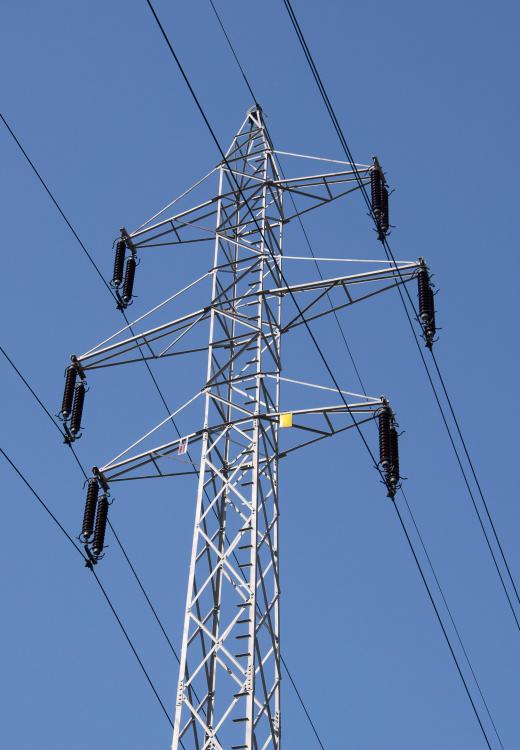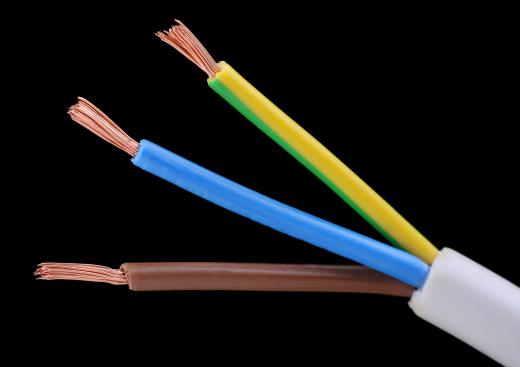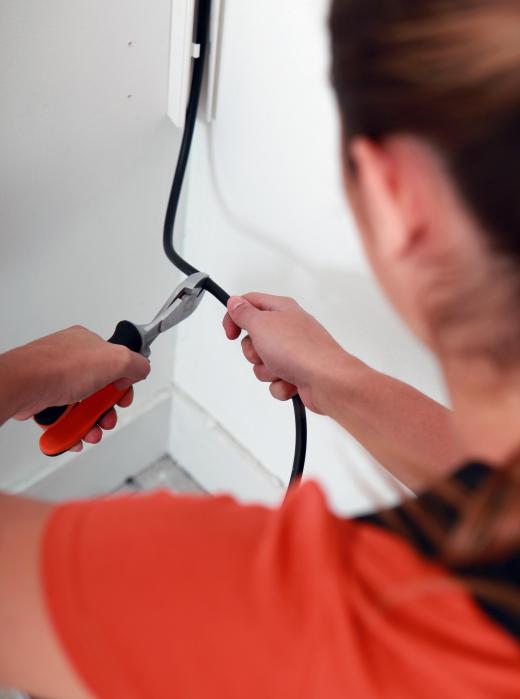A live or hot wire is a conducting wire that carries electrical current in the form of oscillating voltage. Contact with the wire can cause an electrical shock in some settings, as a body can act as a ground and the electricity will flow through the path of least resistance, the body, to reach the ground. Special precautions are necessary to limit the risk of electrical shock from live wires, whether they are downed electrical wires or household wiring.
By convention, many electrical codes insist on the use of color coding in wiring for safety. A live wire may be black, brown, or red, depending on the region. This alerts people to the fact that it carries current and may be energized. In household electrical wiring, the complementary wire is the so-called “neutral.” Wire flows through the live wire to reach an appliance, moves through the circuit created by the appliance, and exits through the neutral wire.

Technically, both live and neutral wires can carry current in such circuits, and some household wiring does not differentiate. In other cases, an electrician may install polarized outlets, where one hole is slightly smaller than the other. The smaller hole accommodates the live wire, while the larger hole is the neutral. This can increase the safety of appliances connected to the outlet, especially when paired with the use of a ground. The ground provides a safe path for electricity to limit the chances of electrical shocks.

The live wire is insulated, with the level of insulation depending on the voltage. Plastics, fabrics, paper, and gels can all be used as insulating agents. Insulation limits the contact between it and other conductors, which prevents shorts. It also ensures that a live wire doesn't energize something like the casing of an appliance. Insulation tends to wear over time, especially in harsh environments. It is important to periodically inspect electrical wiring for signs of hazards like worn insulation or heavily bent and potentially broken wires.

Safety around live wires is important, especially in the case of high voltage wiring like that used in overhead electrical lines and industrial facilities. Many electrical systems have automatic cutoff features to deenergize in the event of a problem like a ground failure or a fallen power pole. In other cases, a technician may need to manually cut off power. Unless directed otherwise, it is advisable to assume that exposed electrical wiring is live, and could post an electrocution hazard.
Ever since she began contributing to the site several years ago, Mary has embraced the exciting challenge of being a About Mechanics researcher and writer. Mary has a liberal arts degree from Goddard College and spends her free time reading, cooking, and exploring the great outdoors.

